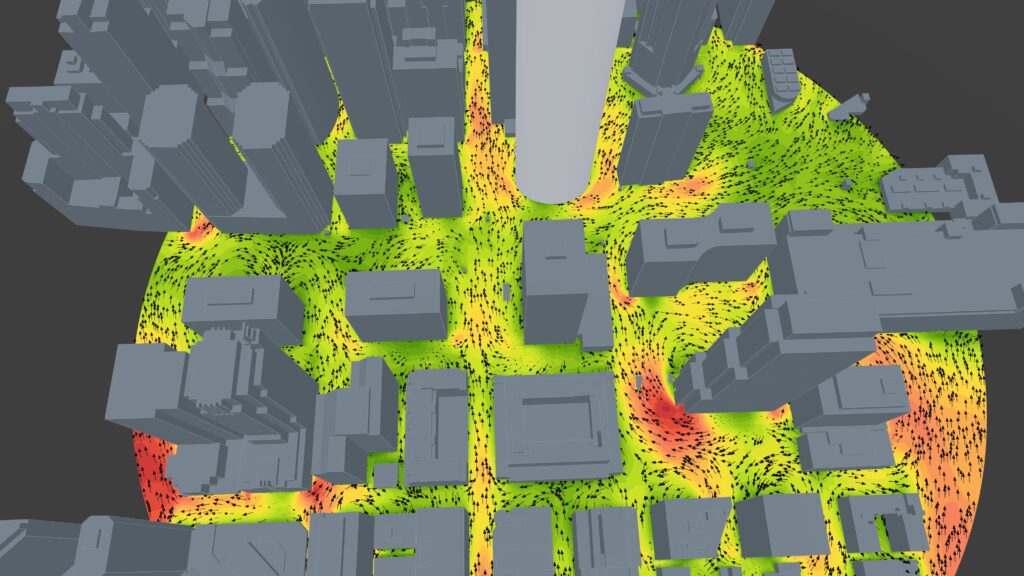Wind, being a vector, possesses both magnitude and direction. Directional arrows, or glyphs, are used to visualize the direction of the flow by positioning 3-dimensional vector arrows at locations across the presentation plane.
These Directional Arrows represent unit vectors, meaning the arrows have uniform lengths and do not signify wind speed magnitude. To determine wind speed, refer to the coloring on the directional wind layers.
Directional arrows are available in both AI and CFD simulations.

Why is this important?
Directional arrows will also provide you with several insights for your site, including areas that will experience channeling, areas where the wind accelerates, and areas where there are expected to be quiet zones. You can then utilize this information to determine the most appropriate mitigation measures for the predominant wind directions within your city.

Example: Channeling Effect